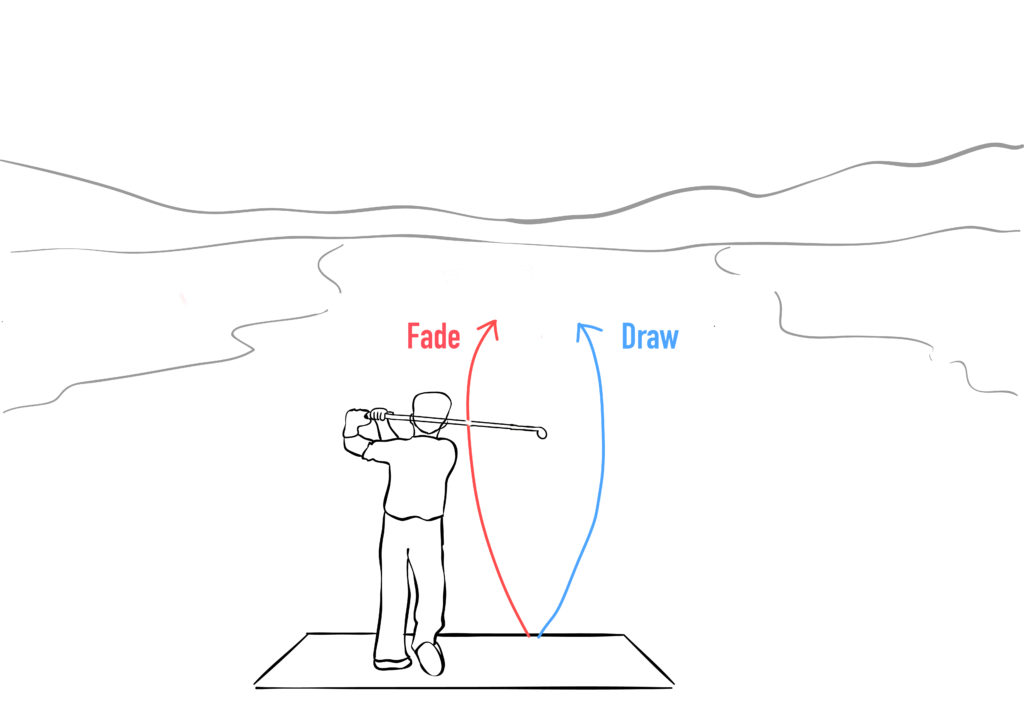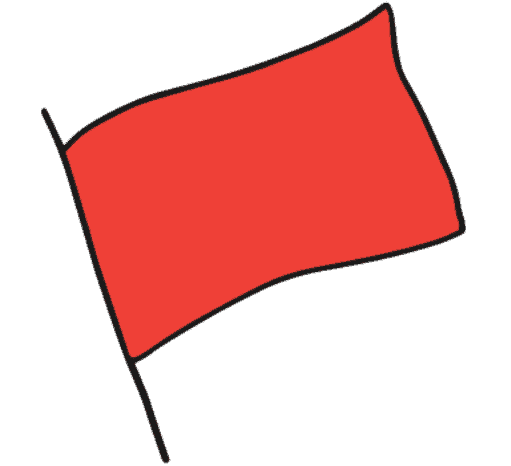There are many different ways to hit a golf ball when you play a game of golf. Knowing the best ways to hit a ball depending on your position is vital for your golf game tactics. Perhaps you have heard the terms draw and fade in golf before, but you do not know or understand their technical meanings.
Draws and fades are two different ways to hit a golf ball that provide a slight angle to your golf shot. For right-handed golfers, a draw is a way of striking a golf ball to travel slightly from right to left. A fade refers to hitting a ball in a way that shifts from left to right.

Read on for in-depth explanations of the key differences between a draw and a fade. I will include a description of how to hit draws and fades. I will also discuss when it is best to use each type of hit and the advantages of each.
The Draw Golf Shot Explained
A draw golf shot is a style of striking a golf ball in which the ball will have a slight side spin and will not travel in a straight line.
A right-handed golfer stands to the left of the ball and has their left hand on the bottom of the club and their right hand on top. The ball will spin and travel from right to left for a right-handed golfer hitting a draw.
The goal of hitting a draw is that the ball makes a slight curve when traveling. Specifically, it will curve from right to left. This way, it will land relatively centered in front of the hole. The ball will curl from right to left and land near the target if done correctly. Hitting a draw allows the golfer to put themselves in a better position for the next hit.
How To Hit a Draw
To hit a draw, the most important thing to keep in mind is that you want to swing your golf club on a path that is slightly to the right of the ball.
Picture a straight line between your golf ball and your target. This is your target line. Now picture another straight line that goes from your ball and points slightly to the right of your target. This is your swing path. Your swing path needs to go somewhat to the right of the target line.
When you hit a draw, your clubface must be open, which means that it faces toward your swing path, slightly to the right. This will allow the ball to start toward the right and finish towards the left, closer to your target.
For more information about how to hit a perfect draw, you can check out this Youtube video:
The Fade Golf Shot Explained
A fade is essentially the opposite of a draw. For right-handed golfers, the golfer will strike the ball so that it curves slightly from left to right. A fade hit also results in the ball curving and landing close to the target.
Similar to a draw, this will also allow the golfer to hit their next shot at a better angle. Hitting a fade also helps the golfer not overshoot the target. The ball is more likely to land close to the hole with the curve.
How To Hit a Fade
If you are hitting a fade, you will be following similar concepts as when you hit a draw. A fade will start left and curve right, finishing near the target.
To hit a fade, you will want your target line to be the same, directly from your ball to the target. For a fade, your swing path will be slightly to the left of the target path.
When you hit a fade, you will want your clubface to be close to the target path, which means your clubface will be slightly tilted inwards or left. If your clubface is close to the target path, it will be open to your swing path. Think of your swing and body as pivoting out to in, coming in towards the left side.
You want your feet, hips, and shoulders to pivot towards the left when performing a fade swing. This helps direct the ball on the right path.
For more tips on how to hit the perfect fade, you can check out this YouTube video:
When To Hit a Draw or Fade
Now that you understand the basics of how to hit a draw, you may be wondering when it is necessary to hit a draw.
- A draw is most useful when your target is to the left of where your tee is. This type of setup on a course is often referred to as a dogleg left. Hitting a draw on a dogleg left course will allow your ball to curve from right to left around the bend and land closer to the target.
- A fade is most useful when your target is to the right of the ball or the tee. This could be a right dogleg course. You want to hit a fade to curve the ball from left to right on this type of course layout. This way, it can bend around a curve from left to right.
Hitting a draw or a fade can also help avoid obstacles on the course such as ponds, sand, or other undesirable terrains. Hitting a draw or a fade can also be an excellent skill to practice, as many golfers naturally hit draws or fades.
If you find that you are someone who hits with a natural draw or fade, slightly to the right or left, you may want to practice perfecting your draw or fade. This will help improve your hit and allow you to get closer to the target.
Advantages of Hitting a Draw or Fade
One of the main benefits of hitting a draw or fade is that it allows the ball to curve around obstacles or with the shape of the course.
Another advantage is that it puts a side spin on the ball. This sidespin ensures that the ball, when landing, does not roll too fast. A ball is less likely to overshoot the target and roll off the course with some sidespin.
Final Thoughts
The main difference between hitting a draw and hitting a fade is the direction the ball travels.
A draw means the ball will travel slightly from right to left with sidespin. A fade means the ball will travel from left to right with sidespin.
These types of hits are helpful if you are playing a not entirely straight course. They are also beneficial if you need to avoid obstacles. As an experienced golfer, practicing your draw and fade hits is an excellent idea to continue to advance your golfing tactics.
